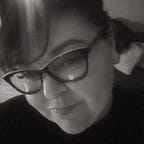Heart: Thai Massage Style
“It’s the little things that matter.”
I owe a whole career of private practice to the “little things.” It’s the “little things” that made my practice distinct, develop a niche and stay pain free. I now understand, technique is a fraction of what massage or manual therapy truly is. In Traditional Thai Massage, there are plenty of particulars to learn and after too long, I understand why.
My ability to sort out the details served me well when it came to learning Thai Massage the Thai way. It wasn't easy. When my teachers pointed out any stray from protocol, I found myself at times feeling frustrated. Traditional Thai training was nothing like my western massage training.
My western massage training taught me to start massage on either side of the body as long as my massage strokes go towards the heart. In Thailand, Traditional Thai Massage always addresses the left side of the body first. In the beginning, I couldn’t comprehend the reason behind the routine except that it was their teaching style.
When I finally asked about the protocol, my teacher replied, “Because the heart.”
She nodded in assurance as she witnessed my eyes go bright and the light bulb go on over my head. So many moments happened for me just like that in Thailand. I had these moments where all my training clicked together like lost puzzle pieces. My Thai Massage, Advance Neuromuscular, Lymphatic Massage and Trauma Touch training all harmoniously work together.
THE HEART
The Heart is a muscle that is part of the Circulatory System which includes both the Cardiovascular System and the Lymphatic System. It helps distribute nutrients and cleanse the entire body. In western massage, we are taught to always make deeper or stronger massage strokes towards the Heart. Doing this works with the body rather than putting unnecessary stress on the heart.
In my massage practice, working with Heart energy has become more than remembering which side to start on or which direction my massage stroke is going. I keep the perspective of viewing my client’s health as a whole, a continuous connection from head to toe. This approach has been tremendously successful when addressing trauma, pain and rehabilitation.
Heart Space/Emotions:
Addressing the Subscapularis using various techniques allows chest, neck and shoulders to be opened easily. Interestingly, the Heart meridian’s energetic line runs through the subscapularis. When Subscapularis is released, the fascia is shared with Serratus anterior which attaches at the inner medial border of the scapula. The muscle fibers of Serratus connects fascia to the area of the Heart Chakra or space. When Heart space is addressed through subscapularis emotional release is common. In Chinese medicine, Heart meridian houses the spirit. When in balance; the mind, emotions and speech are harmonious.
Cleaning the Body:
In Lymphatic Drainage Massage when working the deeper nodes, the left side axillary nodes are always cleared first because of the Heart. The connection of the subclavicular vein and the flow of the heart to the immune system are deeply entwined. It also connects the flow and cleansing of fluid in the interstitial spaces of the entire body. All of the fluid in our body helps bathe the organs and assists in proper synapse firing including in the Central Nervous System. The Heart Meridian is connected to the thinking process and the mind.
Preparing for Deeper Work:
The anatomy and physiology of the body support the balancing of the Heart Meridian which can be addressed through the spine, intercostals and the sternum. Using various tools and massage techniques including acupressure can release upper body tension through manipulation of soft tissue, fascia and muscle tendons. Preparing the tissue while addressing energetics, allows for deeper work on all levels.
Find out about Online Classes and CEU Workshops:
